- Home
- Stephen Baxter
Titan n-2 Page 2
Titan n-2 Read online
Page 2
But it still wasn’t enough. It was pretty obvious that this construction project — if it was ever going to get back on schedule — needed foremen in space.
Benacerraf had been a space nut since watching Lamb and his buddies on the Moon, all those years ago. But the thought of actually going up there herself, in a dinged-up old Space Shuttle, pretty much appalled her.
Tom Lamb himself had been deputed to talk her round. He’d used all the grizzled charm at his disposal.
…But I’ve got two grandchildren, Tom.
Hell, so have I. And if I can still cut it, a couple of years off my pension, why not you?
She was given promises of cooperation, special provisions, fast-tracks through the training. Even bonuses, to compensate her for her dropped salary. You’ll be treated with respect, drawled Tom Lamb. We need you, kid.
The training maybe hadn’t been quite as smooth as she’d been led to believe — too much resistance from the Spaceflight Training Division for that, who had insisted she had to work her way through their hierarchy of trainers and simulators, fast-track or no fast-track. But the pumped-up pay had come in as promised.
She just hadn’t bargained for the respect.
As an ascan, an astronaut candidate, she was royalty — at the rank of princess, at any rate, until she flew. People around the JSC campus were truthfully in awe of her, and the deference with which she was suddenly treated embarrassed her deeply.
But if she was a princess, Tom Lamb was a king among kings. And he loved it. She would watch him stroll through the Public Affairs Office or the clinic or the Crew Systems Lab, and people come running to serve him. And Lamb just lapped it up. It was as if Lamb had spent the whole of his adult life preparing for this role. Which, in a sense, he had.
Her opinion about Tom Lamb had evolved rapidly.
She pulled herself tentatively along the slide wire.
The orbiter was like a splayed-open aircraft. Before her she could see the big delta wings, spreading out to either side of the payload bay. Straight ahead, at the far end of the bay, was the bulky, rounded propulsion system housing, with its tanks and the engine bells for the main engines and the orbital maneuvering system. Behind her was the flat rear bulkhead of the cabin section, like the wall of a big roomy shack, which contained the rest of the crew.
The curve of the wings was elegant. But for her, the design was spoiled by the softscreen mission sponsors’ logos displayed there: the U.S. Alliance, Boeing, Lockheed, Disney-Coke. She knew that stuff brought in a lot of money to NASA, but for her it was a step too far.
At the back of the bay she could see the EDO wafer, the extended-duration pallet with its supplement of lox and liquid hydrogen for the orbiter’s fuel cells, which would allow Columbia to stretch out this mission to sixteen days. One objective of this flight had been to test the new EDO wafer in extremes of temperature, so the orbiter had been aligned to keep the payload bay. in shadow for hours at a time, longer periods than on most flights.
Tom Lamb approached her, along the starboard fuselage longerons. “You ready for the MMU?”
“Sure.”
“Houston, EV2 preparing to deploy MMU.”
“Copy that, Tom.”
Benacerraf made her way to the MMU station. The Manned Maneuvering Unit was a big backpack shaped like the back and arms of an armchair. Since launch it had been stored in its station in the payload bay against the rear cabin bulkhead, on the starboard side.
Lamb had got there first, and he ran a quick check of the MMU’s systems.
“You ready?”
“Let’s do it.”
Lamb held her arms. He turned her around, and she backed into the MMU. She felt latches clasp her suit’s backpack.
“Houston, EV2,” she said. “EMU latches closed.”
“Copy that.”
She pulled the MMU’s arms out around her. She closed her gloved hands around the controllers, which were simple hand-controllers on the end of the arms. A fiber-optic data cable plugged into her suit from the MMU.
Lamb released the tethers which still clipped her to the payload bay slide wires, and reached around her. “Captive latches released.”
“Copy.”
He shoved her gently in the back, and she floated away from the bulkhead. “Don’t even think about it,” he said calmly. “It’s just like the sims.”
…Suddenly she didn’t have hold of anything, and she was falling.
“Oh, shit.”
“We didn’t copy that, EV2,” the capcom said humorlessly.
Lamb ignored him. “Come on, Paula. Turn around.”
She had two big nitrogen-filled fuel tanks on her back now, and there were twenty-four small reaction control system nozzles. She grasped her right-hand controller, and pushed it left. There was a soft tone in her helmet as the thruster worked; she saw a faint sparkle of nitrogen crystals, to her right. In response to the thrust, she tipped a little to the left.
The controller was intuitive; moving it up or down made her pitch, her feet tipping up; left or right gave her a yaw, a sideways tilt. She twisted the handle, and made herself roll about an axis through her head to her feet.
The payload bay rotated around her.
“It’s heavy,” she said. “I can feel the unit’s inertia as I roll.”
“You mass more than seven hundred pounds, suit and all, Paula.”
She blipped the RCS thrusters again, and slowed her roll. She finished up facing Lamb, where he clung to the aft cabin bulkhead. She pushed her left-hand controller, which drove her forward and back. There was a gentle shove, and her drifting slowed.
The MMU seemed to be working well, but its scuffs and scorch marks showed its age. And things most definitely did not feel the same, up here, as in the tethered sims on the ground. When she started moving, she just kept on going, until she stopped herself. She was in a frictionless, three-dimensional environment, like a huge ice-rink, where Newton’s laws held sway in their bare simplicity.
No wonder the Station assembly has proceeded so slowly, she thought. We just aren’t evolved for this environment.
“Okay, Paula,” Lamb called. “You ready for your one small step?”
No, she thought.
“Let’s do it.”
“Houston, EV2 is preparing to leave the payload bay.”
“We copy, Tom.”
Benacerraf tipped herself up so she was facing Earth, with the orbiter behind her.
Earth, before her, was immense, overwhelming. The overall impression was of blue sea and white clouds, the white of an intensity that hurt her eyes. When she looked towards the horizon she could see the atmosphere, a thin blue shell around the planet.
She gave herself a single, firm thrust with the RCS. She felt a small, definite shove in the small of her back.
She rose out of the bay towards the face of Earth; she saw the big silvered doors to either side of her recede.
A tone sounded softly in her helmet, startling her.
“Oh-two alarm, EV2,” the capcom reported.
An oxygen leak. Holed fabric, maybe. “Houston, EV2. Should I come back? I—”
“Belay that, EV2,” Lamb said. “Paula, just take a couple of deep breaths. Relax. You’re safe and snug in there.”
She became aware of her breathing, which was shallow and rapid. Her suit monitors had misinterpreted her high oxygen consumption as a leak.
Deliberately, she slowed her breathing; she tried to unclench her muscles, to relax in the warm cocoon of the suit.
“Just look at the view, kid.”
She looked at the view.
She was flying up towards Africa. The clouds piled over the equator seemed to reach down towards her, clearly three-dimensional and casting long shadows. She could see the Nile, and the ribbon development along it, surrounded by the baked-hard surface of the desert; the dependence of the people on the Nile’s water was clear.
She was extraordinarily comfortable. The suit was quiet, warm, safe.
She could hear the whir of her backpack’s twenty-thousand rpm fan — it sounded like a pc fan. She heard squeaks and pops on the radio, as she drifted over UHF stations on the ground. In her bubble helmet she had a hundred and eighty degree vision, and she had a great sense of freedom. She knew that when she returned to the cabin, after the EVA, it would seem constricting, absurdly confining.
As she gazed at Earth — at all of humanity, save for the six on orbit with her on Columbia and a handful on Station — she felt some of the tension drain out of her, as if it was being drawn up to the planet. She felt lifted out of the web of concerns that dominated her life: the difficulties of her career, the frustrating pace of the space program, her unsatisfactory relationship with Jackie, her daughter, the blizzard of hassles that made up every day, mail and balky technology and her car and her apartment and accounts she had to pay and…
No wonder people get hooked on this, she thought.
“Okay, EV2, Houston. Coming up to your three hundred feet limit.”
“Copy that.” Three hundred feet was as far as she could allow herself to travel. Moving away from Columbia, Benacerraf was actually entering a slightly different orbit. If she went much further, return to the orbiter would become a full-scale rendezvous, a matter of complex course correction maneuvers.
She passed out of the shadow of the wing, and into sunlight; her EMU seemed to glow.
“I see your light, Paula,” Lamb called.
“I’m pleased to hear it, Tom.”
“EV2, Houston. Confirming your ground-to-MMU direct link is operational.”
“Thank you.”
“And your transponder beacon is functioning.”
“Copy that.”
“EV2, Houston. You have a lot of green-eyed people watching you; looks like you’re having a lot of fun.”
“Sure. This is working very nicely. Ah, I’m glad I’ve got old Brer Rabbit out here with me, out in the briar patch where he belongs.”
She heard Lamb chuckle at that, back in the payload bay. She was aping the first words he’d spoken on the Moon.
Most astronauts got off the active list after four or five flights. They moved out into industry, or up into some kind of program management position within NASA. What kind of man was it who would keep on subjecting himself — and his family — to the grind of training, two years for every Shuttle mission, the enormous dangers of the missions themselves, flight after flight, year after year, logging up the spaceflight hours well into his sixties, endlessly defying the survival odds?
She’d even formulated the thought that maybe Lamb wasn’t actually good for anything else. To stay in the office you had to resist promotion, after all. You had to demonstrate sustained mediocrity. John Young, the other great surviving Moonwalker, had been taken off the active roster when he’d been so vocal in criticizing NASA safety procedures after Challenger.
Besides, all that ancient astronaut-as-Cold Warrior garbage from the 1960s, which still clung around NASA, just did not cut any ice with Benacerraf. It had nothing to do with the future of space travel as she saw it, which could only be about a steady, logical and gradual expansion of the space frontier, beyond Earth. Or even with the actions required of NASA, the space agency, to survive in a future of decreasing funding, increasing irrationality, a growing sense of military threat from China and elsewhere which was causing the ancient Cold Warriors to come rearing from their bunkers once more…
It might take all of her career to build the Space Station; she might never get to see another human being walk on the Moon. Well, that was fine by her. Space was a damn difficult place to work.
But as long as Lamb, and one or two others, still hung around, you still had the hero-centered distortion of the whole organization. As if everything that had happened after 1972 had been a long, dull coda. Even the Mission Controllers and their backroom staff were mostly aviation people of some kind, she was finding; and a startling number of the controllers — who were supposed to be there as specialist engineers or scientists — would apply to join the astronaut office at every recruitment round, regular as clockwork.
…But all that was before she’d begun to train with Lamb for this flight, STS-143. Before she’d sat with him through hours of sims, observed his prowess at the antique complexities of the Shuttle system, seen him demonstrate his calm control in the abort options. Tom Lamb could handle things, she’d come to realize. His old-fashioned jock bull hid a central, deep-rooted competence.
As she’d been strapped into Columbia’s flight deck for her first launch, she’d been grateful for Lamb’s calm voice, responding to the ground. If anyone could get her home alive, it would be Tom Lamb.
And anyhow, now she was up here, she started to see his point of view.
She swung herself around, and faced back down into the payload bay. She blipped her left-hand controller to slow her rotation.
Columbia’s cabin was above her head, the tail section below her feet. The starboard wing was in the shadow of the sun; the big Stars and Stripes on the port wing was obscured by the open bay doors. Her eyes were dark-adapted to Earthlight, so she could see no stars beyond the orbiter. Columbia was like a complex toy, brilliant white and silver, set against complete blackness.
At first glance Columbia looked faintly ridiculous: that fat, boxy body, the patchy coloration of the thermal protection system, the snub nose, those thick wings and that huge tail: Columbia was like an airliner stranded in space, its aerodynamic surfaces useless in vacuum. Columbia, the first of the five Shuttle orbiters built — and so the most primitive — weighed all of a hundred and eighty thousand pounds dry. You had to haul all that mass up into orbit, and back down again, every flight, to deliver just fifty thousand pounds of payload to orbit.
And after thirty flights Columbia was showing her age. She could see how the white-painted hull was scarred and battered, the slight discolorations between the tiles, the scuffs on the windows that sparkled in the sunlight, the stains on the thermal fabric lining the payload bay.
But all of that seemed to fade from her awareness, as she saw the orbiter drifting serenely against the blackness of space. Bizarrely, Columbia looked as if she belonged up here.
The Shuttle system was the technology of the 1970s, still flying in the ’00s, with the hard wisdom of the intervening years built into it. And, realistically, no replacement system in sight. Columbia was fresh paint over rusty, obsolescent technology. But somehow, up here, she was able to make out the 1960s von Braun dream of spaceplanes which the orbiter embodied.
Her throat hurt. Damn it, she felt as if she was going to cry.
The light around her changed. The shadow of the starboard wing was growing longer. Columbia was passing into another forty-five minute night.
“…Hey, Paula,” Tom Lamb said now. “Scuttlebutt from home. Some double-dome from JPL is saying he’s found life on Titan.”
“Really?”
“So they say. Nice place to hear about it, huh.”
“Yes,” she said.
…She turned again, to face Earth.
At the rim of the planet she could see the airglow layer, a bright layer of oxygen radiating at the top of the atmosphere, like a fake horizon. The lights of cities, strung along the coasts of the land, looked like streetlights scattered along a road. There was a thunderstorm over central Africa, and she could see lightning sparking constantly, over cloud systems spanning thousands of miles. The lightning propagated through the clouds like a living thing, growing and spreading; its glow shone from beneath the layer of cloud, and she could see three-dimensional structure within the cloud, edges and swirls of purple.
The leading edges of Columbia glowed, a faint orange, in an aura a few inches thick. The glow came from a thin hail of atoms of atomic oxygen, interacting with the orbiter’s surfaces.
Even here, she thought, they were not truly free of Earth.
She thought about the news from Titan, wondering vaguely what it might mean for her.
The low-level arc floodlights in the payload bay glowed like a captive constellation.
* * *
The suit technician removed the protective cover from Jiang Ling’s helmet. Jiang sat down on the lip of the hatch and hauled herself into the orbital module, head first. Another technician pulled off her outer boots, and she swung her legs inside the module.
She was alone, here in this orbital compartment, this elongated sphere within which she would spend a week in low Earth orbit. The compartment was like a miniature space station, crammed with storage lockers, provisions, scientific equipment and literature. Everything was gleaming white, new and shiny.
The technicians were framed in the hatchway. They were both Han Chinese: military officers, with their brown uniforms visible under their white coats. They grinned at her. But, she thought, their eyes were hard.
One of them passed her a small brass bell. She took it in her gloved hand. It was inscribed with the face of Mao Zedong, in comfortable, corpulent middle age.
The technician grinned at her. “Maybe ta laorenjia will bring you luck.”
She raised her hand in thanks.
The technicians stepped back into the white room beyond the doorway, and hauled the hatch closed. It shut with finality. Even the quality of the sound changed. She was aware of a sense of enclosure, almost of claustrophobia.
Clutching the brass bell, she put such thoughts aside as irrelevant.
Beneath her was an inner hatch. She twisted around and lowered herself through this. Now she was entering the second of her craft’s three modules, called the command compartment, which she would ride to orbit — and home to Earth again, to her planned soft landing in the Gobi Desert.
Below her, inaccessible now, was the third part of her craft: an equipment module, containing fuel tanks, oxygen, water supplies, life support, and the mass of equipment that ran the on-board systems. The equipment module would be used to maneuver the craft in orbit, and when Jiang finally returned to Earth this stage would be used as a retro-rocket, before being jettisoned along with the orbital module.

 The Martian in the Wood
The Martian in the Wood THE H-BOMB GIRL
THE H-BOMB GIRL World Engine
World Engine Titan n-2
Titan n-2 Newton's Aliens: Tales From the Anti-Ice Universe
Newton's Aliens: Tales From the Anti-Ice Universe Exultant
Exultant Manifold: Origin
Manifold: Origin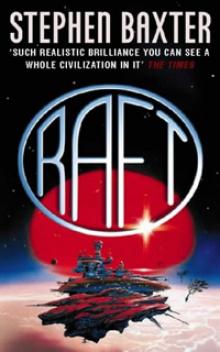 Raft xs-1
Raft xs-1 Bronze Summer n-2
Bronze Summer n-2 Transcendent
Transcendent Stone Spring
Stone Spring Coalescent
Coalescent The Medusa Chronicles
The Medusa Chronicles Origin m-3
Origin m-3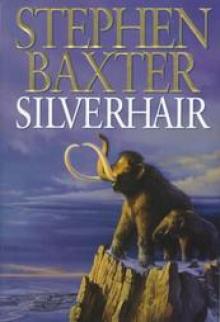 Silverhair tm-1
Silverhair tm-1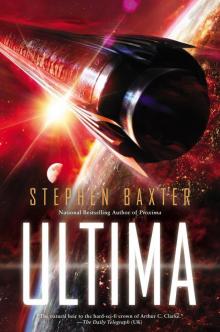 Ultima
Ultima Voyage n-1
Voyage n-1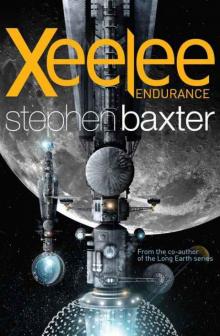 Xeelee: Endurance
Xeelee: Endurance Space m-2
Space m-2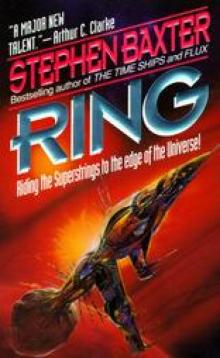 Ring xs-4
Ring xs-4 Raft
Raft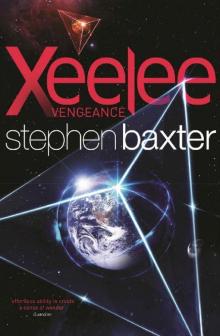 Xeelee: Vengeance
Xeelee: Vengeance Iron Winter n-3
Iron Winter n-3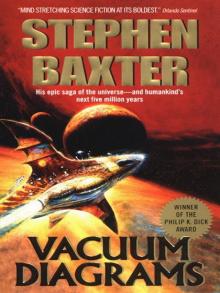 Vacuum Diagrams
Vacuum Diagrams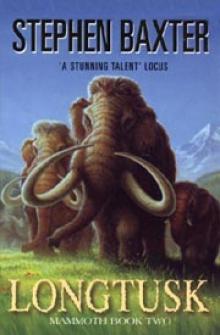 Longtusk tm-2
Longtusk tm-2 Proxima
Proxima Evolution
Evolution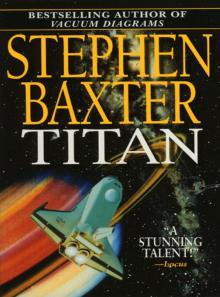 Titan
Titan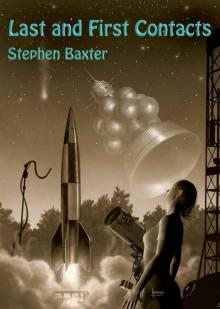 Last and First Contacts (Imaginings)
Last and First Contacts (Imaginings) Emperor
Emperor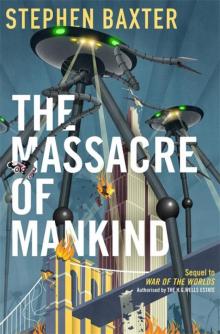 The Massacre of Mankind
The Massacre of Mankind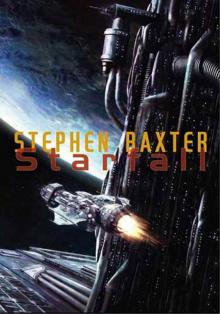 Starfall
Starfall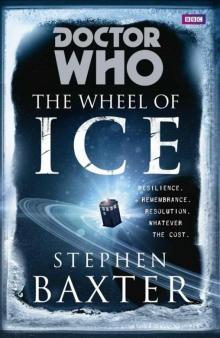 Doctor Who - The Wheel of Ice
Doctor Who - The Wheel of Ice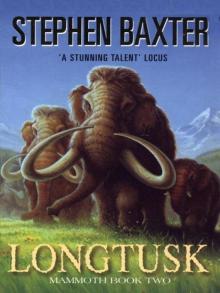 Longtusk
Longtusk Silverhair
Silverhair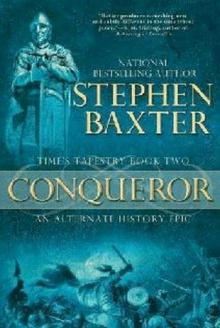 Conqueror tt-2
Conqueror tt-2 Flood
Flood Flood f-1
Flood f-1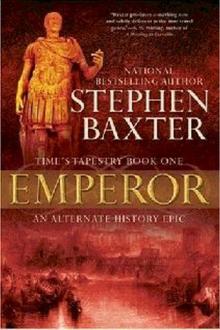 Emperor tt-1
Emperor tt-1 Moonseed
Moonseed Conqueror
Conqueror Timelike Infinity xs-2
Timelike Infinity xs-2 The Ghost Pit
The Ghost Pit Xeelee: An Omnibus: Raft, Timelike Infinity, Flux, Ring
Xeelee: An Omnibus: Raft, Timelike Infinity, Flux, Ring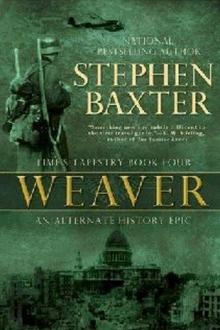 Weaver tt-4
Weaver tt-4 Landfall: Tales From the Flood/Ark Universe
Landfall: Tales From the Flood/Ark Universe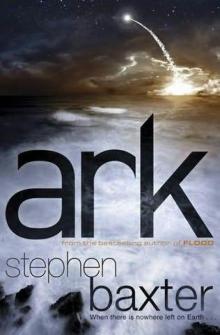 Ark
Ark Emperor: Time’s Tapestry Book One
Emperor: Time’s Tapestry Book One Space
Space Icebones
Icebones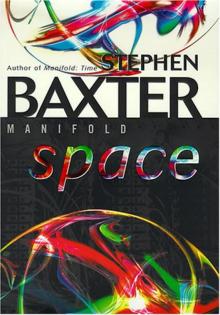 Manifold: Space
Manifold: Space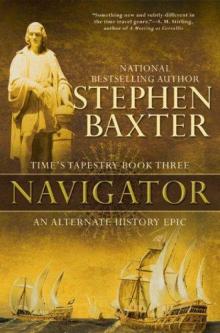 Navigator
Navigator Obelisk
Obelisk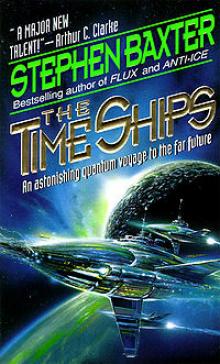 The Time Ships
The Time Ships Bronze Summer
Bronze Summer Resplendent
Resplendent Moonseed n-3
Moonseed n-3 Flux xs-3
Flux xs-3 Transcendent dc-3
Transcendent dc-3 Icebones tm-3
Icebones tm-3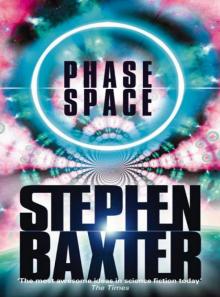 Phase Space
Phase Space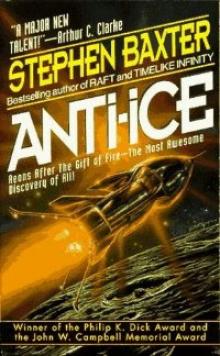 Anti-Ice
Anti-Ice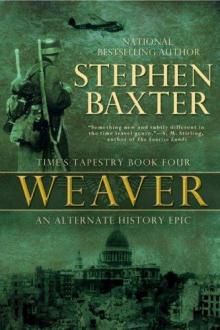 Weaver
Weaver Voyage
Voyage Time m-1
Time m-1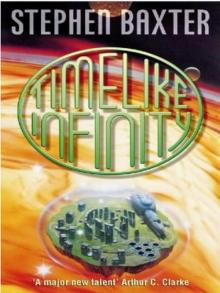 Timelike Infinity
Timelike Infinity Exultant dc-2
Exultant dc-2 Coalescent dc-1
Coalescent dc-1 Navigator tt-3
Navigator tt-3